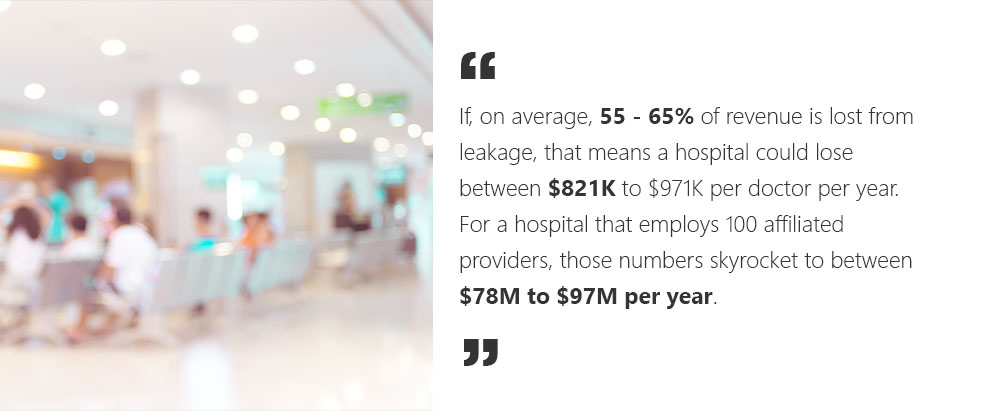The increasing complexity of patient referrals in healthcare
Patient referrals are increasing in number every day. Health Systems and Hospitals which send out numerous medical referrals find it difficult to track and close a patient referral loop on time. What factors prevent the referral coordinators, operations managers, physicians or care providers from closing the patients’ referral loops?
- Prior Authorization – The referral coordinator does the insurance pre-authorization for the patient referrals in healthcare. Considering that one out of every three patients is referred to a specialist, it is difficult to do prior authorization. This makes patient referral system time-consuming and affects referral loop closure.
- Finding the right specialist/imaging center – The referring provider must choose the right specialist or imaging center that will suit the patient best. He/She should send the referral to a reliable provider who will give the best care and give regular updates. The referring provider must also consider a provider who covers the patient’s insurance before initiating the referral. If the referring provider fails to do this, open patient referral loop becomes imminent.
- No updates on the referral progress – The receiving provider fails to update the progress of the referral. 25% to 50% of referring physicians do not know if their patients actually visit the specialist or imaging center. As many patient referrals are initiated on a daily basis, tracking it manually is difficult for the referring provider. This ultimately results in open patient referral loop.
- Inadequate referral information – The receiving providers usually have a tough time processing referrals with incomplete information. 70% of the specialists rate the patient referral information from the referring providers as poor. This affects the patient referral lifecycle.
- Outdated referral workflow – The current referral workflow is outdated. The providers find it difficult to cope up with the increasing patient referrals in healthcare. On an average, a referring provider spends half an hour to one hour per referral and even more time in following up. Outdated referral technology affects the referral loop closure.
Close a referral loop in healthcare with the HealthViewX Patient Referral System
Information Technology enables patient referral workflow automation. HealthViewX Patient Referral Management System simplifies the process and closes the referral loop on time.
- The Primary Care Provider (PCP) identifies the need for a referral and initiates the same through the EHR system.
- The referral coordination team then validates the referral and does the insurance pre-authorization with the help of HealthViewX solution.
- The Intelligent Provider Smart Search feature of HealthViewX Patient Referral Management System helps in finding the right specialist or imaging center easily.
- The referral coordination team then sends the referral with the necessary documents to the relevant specialist or imaging center through the HealthViewX platform.
- The receiving provider gets notified about the referral and can schedule appointments with the patient.
- The patient and the receiving provider get reminders of the appointments thus reducing no-show rates.
- The referring provider is also notified about the status of the referral and how it is progressing. HealthViewX timeline view makes tracking and managing the referral lifecycle easier.
- HealthViewX tracks and sends reminders to the receiving provider to update the diagnosis, treatment recommendations, care plans in the referral.
- HealthViewX makes it easy for the referring provider by automatically updating this information back to the EHR system.
- Thus the HealthViewX solution closes the referral loop on time and helps in easy monitoring of the same.
Features and Functionalities
- Referral workflow automation reduces the time and manual effort spent on a referral. Thus HealthViewX solution improves the efficiency of the process.
- Patient coordination framework achieved through the patient application that helps in managing appointments and log data for the care plans prescribed by the provider.
- Automated insurance pre-authorization reduces the work of the referral coordination team and makes the process simple.
- Intelligent Provider Search feature helps in finding the right specialist or imaging center in no time.
- Referral timeline view and communication enables easy flow of information between the referring and the receiving ends.
- Scheduler integration gives timely reminders and notifications to the patients and the providers about appointments, lab tests, etc.
- Referral insights and analytics gives the PCPs concrete data of how many referrals were converted to an appointment by a specialty care or an imaging center. It will help in analyzing who responds quickly and to whom the PCP can direct future referrals.
Benefits of closing the patient referral loop in the healthcare industry
- Increased Medicare reimbursements – Medicare considers closing medical referral loop as a benchmark for giving reimbursements. Closed medical referral loops increase the opportunities for Medicare reimbursements for referral marketing.
- Streamline referral management – With HealthViewX Patient Referral System in place, the referral workflow is automated and streamlined.
- Improved patient care – Reduced waiting time gives patient satisfaction thereby improving the care quality.
- Increased productivity – Reduced operational time improves the efficiency of the patient referral system.
HealthViewX Patient Referral Management application helps in closing the referral loop and increases the revenue for the practice. To know more about HealthViewX solution, schedule a demo with us. Our patient referral management experts will guide you through our HIPAA-compliant solution.







